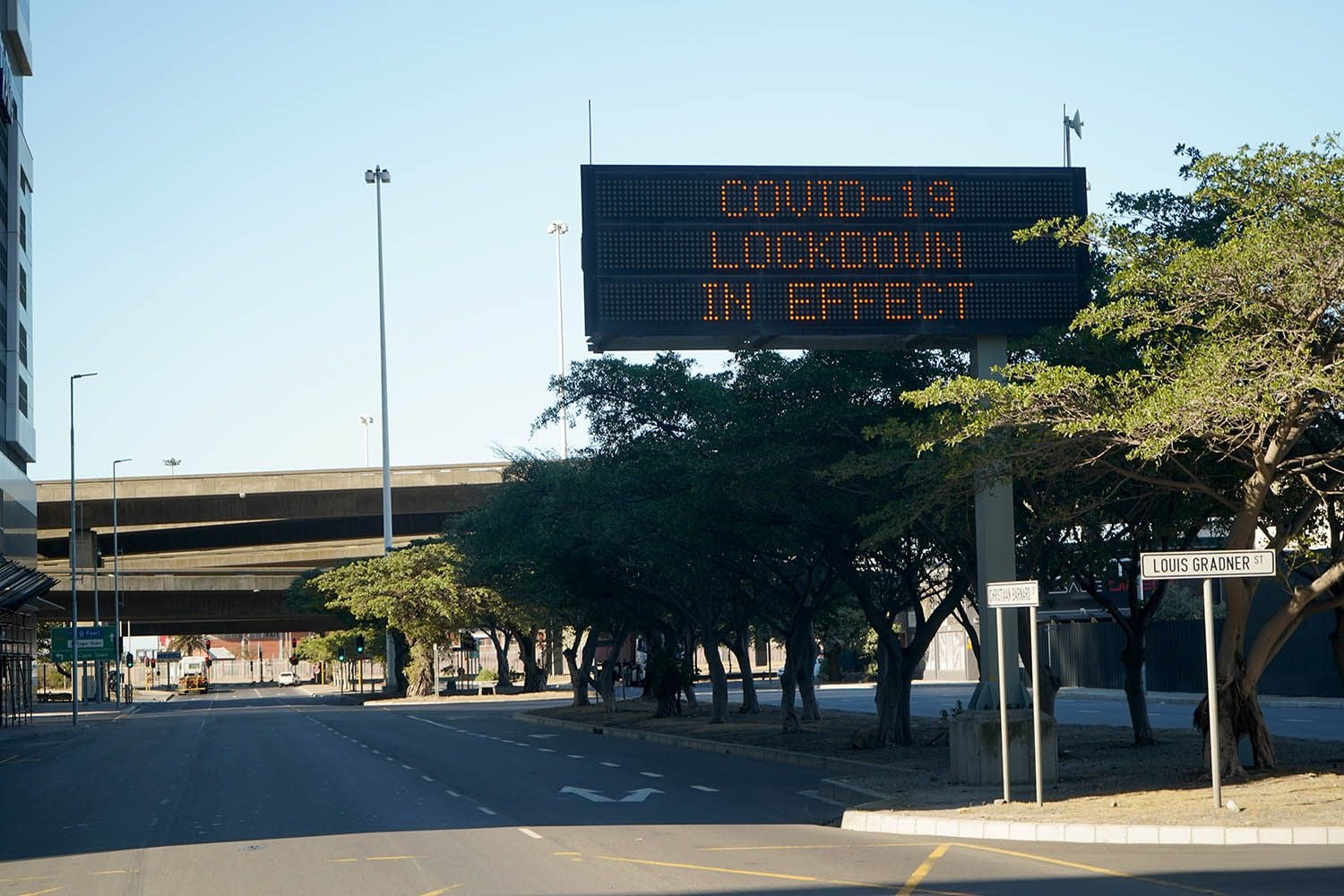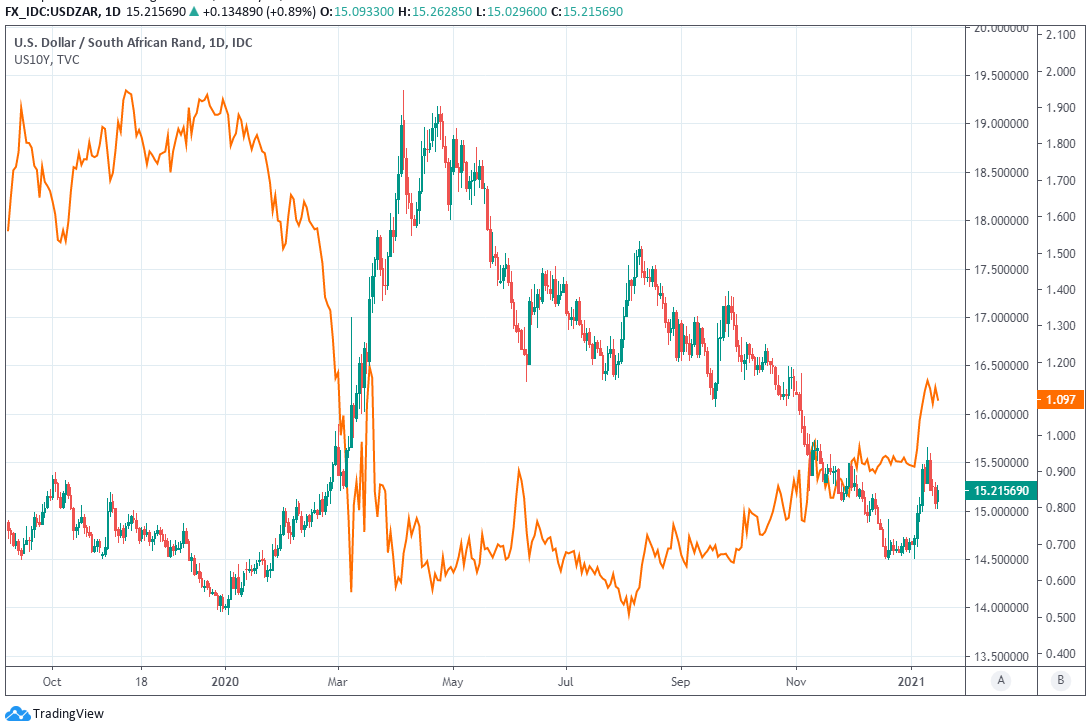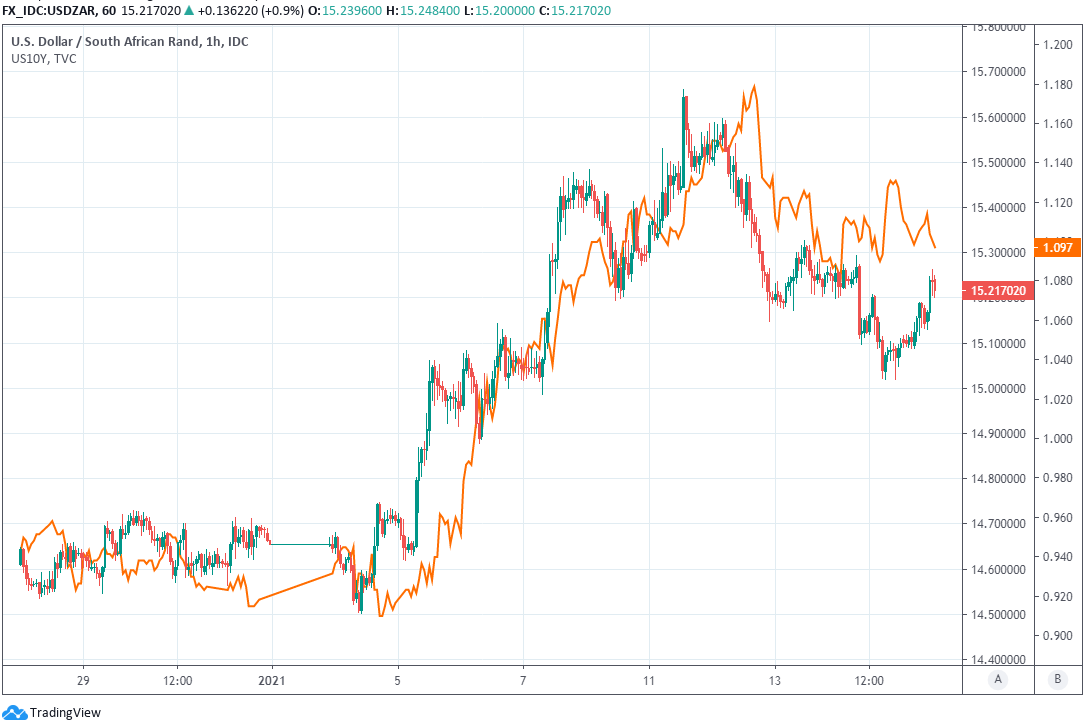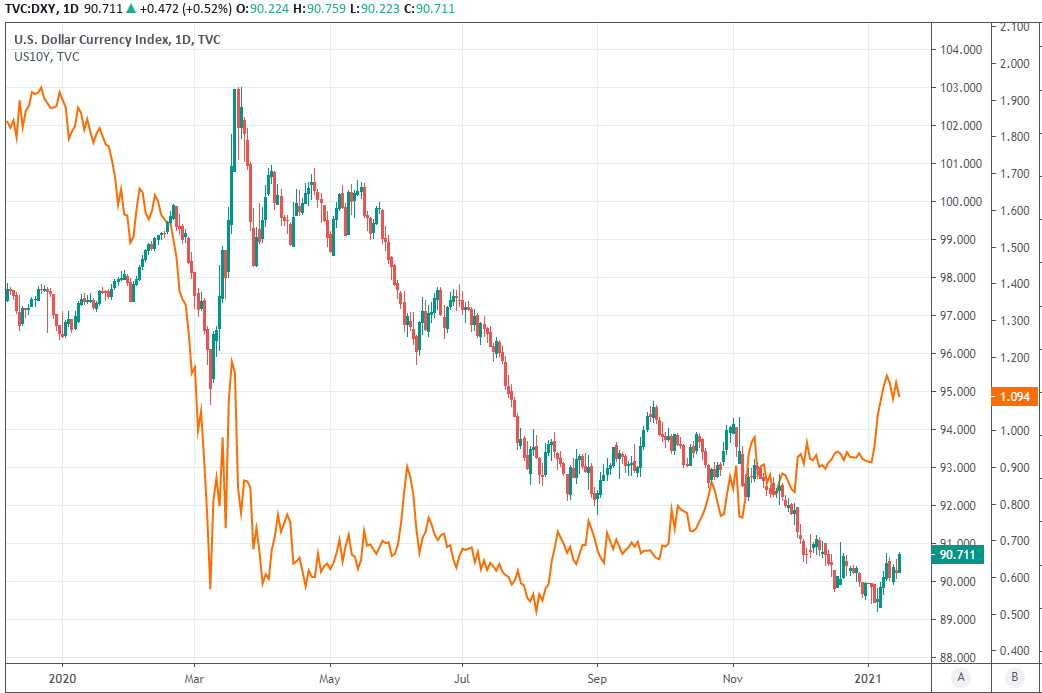South African Rand Braced for Further Impact as SARB Set to Navigate Minefield
- Written by: James Skinner
- ZAR to be tested by SARB interest rate projections on Wednesday.
- Also remains at risk from U.S. yields, USD & vaccine uncertainties.
- Delays to contain recovery as USD/ZAR enamoured of U.S. yields.

Image © Adobe Images
- GBP/ZAR spot rate at time of writing: 20.75
- Bank transfer rate (indicative guide): 20.02-20.16
- FX specialist providers (indicative guide): 20.43-20.60
- More information on FX specialist rates here
The Rand was losing a battle to recapture December's highs on Friday but could be further tested over the week ahead when the South African Reserve Bank (SARB) seeks to navigate a minefield of risks in its latest interest rate decision.
South African Reserve Bank policymakers are widely expected to leave their cash rate unchanged at a new record low of 3.5% next week, although coming against a backdrop of elevated U.S. bond yields, the developing currency could be more sensitive than usual to the SARB's interest rate projections.
Three of the SARB's five policymakers voted to leave the cash rate at 3.5% in November while a large minority of two Monetary Policy Committee members favoured another interest rate cut, pitting some of the bank's rate setters in opposition to its quarterly projection model.
"The SARB has probably reached the end of its cutting cycle and that the repo rate will remain at its current low of 3.5% through to the second half of 2022," says Siobhan Redford, an economist at Rand Merchant Bank. "The SARB will continue to emphasise its data dependency, and the split of votes and the QPM could continue to signal interest rate moves in opposite directions."
The SARB's quarterly projection model again advocated in November that no further rate cuts should be implemented in the short-term while also continuing to prescribe two 25 point rate hikes for late 2021, with one in the third and another in the final quarter.
It's not clear what the bank's model will advocate next week but if it continues to prefer interest rate rises later this year, it'd be doing so amid a protracted period of difficulty South Africa's economy, which faces hindrance at the hands of coronavirus containment measures until vaccines can be rolled out in enough number to achieve herd immunity. Only it faces these difficulties without the luxury of the financial supports that have lifted U.S. bond yields this January.
Above: USD/ZAR rate shown at hourly intervals alongside 10-year U.S. government bond yield.
Elevated American yields are offering investors an improved return for holding the Dollar instead of other currencies and, when combined with domestic risks in South Africa, have left the central bank trapped between a rock and a hard place ahead of next Thursday's interest rate decision.
"The Rand is expected to trade around a midpoint of 15.20 during 2021 which contributes to inflation remaining on average below the midpoint of the inflation target during the course of the year," Redford says.
Whether or not some of the SARB's policymakers continue to advocate a rate cut could be an important determinant of whether USD/ZAR and other South African exchange rates head toward the top or bottom of their recent as well as anticipated trading ranges for 2021 over the coming weeks.
{wbamp-hide start}{wbamp-hide end}{wbamp-show start}{wbamp-show end}
The advice given by the quarterly projection model, along with commentary on the extent to which the bank is likely to follow it, may also be important influences on the Rand in the latter part of next week.
"We expect no change to the repo rate in January or March this year. The FRA curve also shows this viewand dips down slightly by a cut of only around 5bp by May," says Annabel Bishop chief economist at Investec. "We do expect a 25bp hike at that point, as by May 2021, absent severe monthly deflationary pressures, the negative interest rate differential will be quite large. While the SARB may choose to ignore this, the rand could weaken materially, and push through even higher inflation, causing the differential to become even more negative. We forecast a further rate hike in Q4.21 for the same reasons."
The South African coronavirus situation and financial vulnerabilities only enhance the imperative for the SARB to do more to support companies and people, but it too increasingly has few if-any options available to it. 
Above: USD/ZAR rate shown at daily intervals alongside 10-year U.S. government bond yield.
The latter is partly because 'real interest rates' are close to turning negative in South Africa, as they already are in the developed world, and if allowed to do so could be enough to dislodge the Rand from its recovery path.
That would lead to rising inflation and could quickly force the inflation-fighting SARB to reverse any interest rate cuts. Should t he SARB cut rates next Thursday the Rand could suffer as a result. Meanwhile, developments in the American bond market could yet force the SARB to raise its interest rate, as well as the financial and economic burden on South Africans because higher U.S. yields reduce the attractiveness of the Rand in the eyes of investors.
"We do not have the money, that is the simple truth,” says President Cyril Ramaphosa, according to a report from Business Day, when asked whether South Africans could expect another relief package like that provided in the first wave and like the one which is about to be negotiated by the U.S. Congress.
Meanwhile, the domestic coronavirus situation asks questions of whether South Africa's yields and interest rates are really high enough to compensate for the risks involved with holding the currency.
This is because weak public finances are threatening months, if-not years of delay before the country can get its hands on enough vaccines to achieve herd immunity and subsequently abandon restrictions on activity and social contact.
The base scenario held by Investec suggests USD/ZAR should remain below 16.0 this year but with upside risks, while Rand Merchant Bank forecasts USD/ZAR to trade between 14.50 and 16.50 in 2021.
"Advanced economies that have vaccines well in excess of their needs will likely pass them through the COVAX system, benefitting from increasing the spread of vaccination globally, and reaching herd immunity, globally, and so indirectly protecting their populations," Bishop says. "The African Union has reported over 270 million doses of COVID-19 vaccines have been secured for the continent’s population of over a billion, on top of another 600million, but with most vaccines requiring two doses, the continent needs around 2.6billion doses."
Above: US Dollar Index shown at daily intervals alongside 10-year U.S. government bond yield.






